Brain Research |
|
Istraživanje mozga |
Autism science is moving stunningly fast

|
|
Znanost o autizmu napreduje nevjerojatnom brzinom

|
Mapping the autistic brain

|
|
Izrada karte autističnog mozga

|
The beginning of a revolution

|
|
Početak revolucije

|
Brains "light up" in response to eye contact

|
|
Mozgovi se "pale" kao odgovor na uspostavljanje kontakta očima

|
Autism risk gene linked to differences in brain structure

|
|
Gen koji nosi rizik od autizma povezan je s razlikama u strukturi mozga

|
Can vitamin B6 and magnesium help?

|
|
Mogu li vitamin B6 i magnezij pomoći?

|
Adjusting the spine of the patient

|
|
Podešavanje kralješnice pacijenta

|
Exercise is vital

|
|
Vježbanje je ključno

|
|
|
|
|
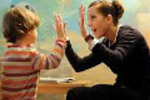
Autism science is moving stunningly fast
Researchers are scanning the brains of hundreds of autistic children, looking for insights into a condition that has proved frustratingly hard to understand.
Autism, which now afflicts more than 1 million children in the USA, is associated with a spectrum of disabilities, including repetitive behaviours and problems socializing and communicating.
The quest to unravel the mystery — and get children and families the help they need — has become more urgent as autism has become more widely diagnosed.
The condition now affects one in 88 children, according to a report last month from the Centre for Disease Control and Prevention.
Yet researchers today also say they're beginning to make progress, perhaps for the first time, in understanding the autistic brain.
Scientists are getting a glimpse of what might go wrong in early brain development, says Sarah Paterson, a developmental psychologist...
 Search for more... Search for more...
Researchers are scanning the brains of hundreds of autistic children, looking for insights into a condition that has proved frustratingly hard to understand.
Autism, which now afflicts more than 1 million children in the USA, is associated with a spectrum of disabilities, including repetitive behaviours and problems socializing and communicating.
The quest to unravel the mystery — and get children and families the help they need — has become more urgent as autism has become more widely diagnosed.
The condition now affects one in 88 children, according to a report last month from the Centre for Disease Control and Prevention.
Yet researchers today also say they're beginning to make progress, perhaps for the first time, in understanding the autistic brain.
Scientists are getting a glimpse of what might go wrong in early brain development, says Sarah Paterson, a developmental psychologist.
And while some of the most exciting discoveries have come only in the past year, researchers such as Sarah Paterson say the findings could soon make a real difference for toddlers.
A decade from now, she expects doctors to diagnose the condition earlier and treat it more effectively, at least for children whose family history singles them out as high-risk.
Autism brain science "has moved stunningly fast", says Kevin Pelphrey, an associate professor of child psychiatry.
Pelphrey knows parents are impatient; they desperately need help today.
Yet, as the father of an autistic child, Pelphrey says, the latest research also gives him hope for therapies that can reshape children's brains, not just as babies but into adolescence.
"Treatment can have effects even very late", he says.
"It's not a lost cause at all".
Parents have helped make some of the advances possible by funding that is now bearing fruit, says Robert Schultz, director of the Center for Autism Research.
Technological advances help as well.
In only a few years, it will be cheaper to sequence an autistic child's genetic blueprint than to perform an intensive examination, Schultz says.
» Search for more...
|
|

Znanost o autizmu napreduje nevjerojatnom brzinom
Znanstvenici skeniraju mozgove stotine djece s autizmom, tražeći uvide u stanje koje se pokazalo frustrirajuće teškim za razumijevanje.
Autizam, koji sada pogađa više od 1 milijun djece u SAD-u, povezan je sa cijelim spektrom invaliditeta koji uključuju ponavljajuća ponašanja i probleme s druženjem i komuniciranjem.
Zadatak da razriješimo ovaj misterij - te da djeca i obitelji dobiju pomoć koja im je potrebna - postao je još hitniji otkako se autizam u praksi dijagnosticira sve češće.
Stanje danas pogađa jedno dijete od njih 88, navodi se u prošlomjesečnom izvješću Centra za kontrolu i prevenciju bolesti.
Pa ipak, znanstvenici danas kažu kako počinju napredovati u razumijevanju autističnog mozga, možda po prvi put.
Znanstvenici dobivaju uvid u stvari koje bi mogle poći po zlu u ranom stadiju razvoja mozga, kaže Sarah Paterson, razvojni psiholog...
 Potraži više... Potraži više...
Znanstvenici skeniraju mozgove stotine djece s autizmom, tražeći uvide u stanje koje se pokazalo frustrirajuće teškim za razumijevanje.
Autizam, koji sada pogađa više od 1 milijun djece u SAD-u, povezan je sa cijelim spektrom invaliditeta koji uključuju ponavljajuća ponašanja i probleme s druženjem i komuniciranjem.
Zadatak da razriješimo ovaj misterij - te da djeca i obitelji dobiju pomoć koja im je potrebna - postao je još hitniji otkako se autizam u praksi dijagnosticira sve češće.
Stanje danas pogađa jedno dijete od njih 88, navodi se u prošlomjesečnom izvješću Centra za kontrolu i prevenciju bolesti.
Pa ipak, znanstvenici danas kažu kako počinju napredovati u razumijevanju autističnog mozga, možda po prvi put.
Znanstvenici dobivaju uvid u stvari koje bi mogle poći po zlu u ranom stadiju razvoja mozga, kaže Sarah Paterson, razvojni psiholog.
I dok su neka od najuzbudljivijih otkrića stigla tek u posljednjih godinu dana, znanstvenici poput Sarah Paterson kažu da bi rezultati uskoro mogli postati značajni za malu djecu.
Ona očekuje da će za desetak godina liječnici biti u stanju ranije dijagnosticirati stanje i učinkovitije ga liječiti, barem kod djece koju obiteljska anamneza izdvaja kao vrlo rizičnu.
Znanost o autizmu mozga "napredovala je nevjerojatnom brzinom", kaže Kevin Pelphrey, izvanredni profesor dječje psihijatrije.
Pelphrey zna da su roditelji nestrpljivi; njima je očajnički potrebna pomoć već danas.
Ipak, kao otac autističnog djeteta, Pelphrey kaže da mu najnovije istraživanje također daje nadu da će se pojaviti terapije koje bi mogle promijeniti dječje mozgove, ne samo dok su bebe već i u adolescenciji.
"Liječenje može imati učinke čak i vrlo kasno", kaže on.
"To uopće nije izgubljen slučaj".
Roditelji su financiranjem pomogli da neki od napredaka postanu mogući, a to sada daje rezultate, kaže Robert Schultz, ravnatelj Centra za istraživanje autizma.
Također pomaže i napredak tehnologije.
Za samo nekoliko godina bit će jeftinije napraviti sekvenciranje gena autističnog djeteta nego obaviti intenzivnu pretragu, kaže Schultz.
» Potraži više...
|
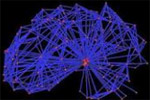
Mapping the autistic brain
Yet mapping the autistic brain - like everything about autism - has been difficult, says Thomas Insel, director of the National Institutes of Mental Health.
Researchers often describe autism as a puzzle with countless pieces, none of which yet fit together to form a recognizable picture.
Insel says autism is now commonly regarded not as a single condition but as a group of related disorders with similar symptoms but different causes.
Trying to make progress against autism, then, is not so much like putting together one puzzle but a dozen, whose pieces are mixed together in one box.
"It would be great if there were a grand unified theory of autism, but we're far from that right now", says David Amaral, research director at the University of California-Davis.
Parents often ask to see their children's brain images, hoping to learn what's going on in the minds of youngsters, says neurologist Sarah Spence.
But even when you look at a child who has no language, who is self-injuring, who's had multiple seizures, you would be amazed at how normal their brains look...
 Search for more... Search for more...
|
|

Izrada karte autističnog mozga
Pa ipak, izrada karte autističnog mozga - kao i sve što se tiče autizma - bilo je teško, kaže Thomas Insel, direktor Nacionalnog instituta za mentalno zdravlje.
Znanstvenici često opisuju autizam kao slagalicu s bezbroj dijelova, od kojih se niti jedan dio trenutno ne uklapa kako bi formirao prepoznatljivu sliku.
Insel kaže da se autizam sada obično smatra ne samo jednim stanjem, već skupom povezanih poremećaja sa sličnim simptomima ali različitim uzrocima.
Pokušaji da napredujemo u borbi protiv autizma, dakle, nisu toliko nalik sastavljanju jedne slagalice, već cijelom tucetu slagalica čiji su dijelovi zajedno pomiješani u jednoj kutiji.
"Bilo bi sjajno kada bi postojala velika i jedinstvena teorija autizma, ali smo u ovom trenutku daleko od toga", kaže David Amaral, direktor istraživanja na Sveučilištu California-Davis.
Roditelji često traže da pogledaju slike mozga svoje djece, nadajući se da će naučiti što se događa u mladim glavama, kaže neurologinja Sarah Spence.
No, čak i ako pogledate dijete koje ne govori, koje je sklono samoozljeđivanju, koje je imalo veći broj napadaja, mogli biste ostati zaprepašteni time koliko normalno njihov mozak izgleda...
 Potraži više... Potraži više...
|
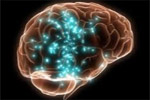
The beginning of a revolution
"This is the very beginning of a revolution", says Dolmetsch, an associate professor of neurobiology at Stanford University.
Dolmetsch says his team is still a long way from identifying a safe drug to correct some problems he has found in autistic brain cells.
Still, Insel singles out Dolmetsch's work as some of the most exciting in the field.
"This approach could be a game-changer", Insel says.
Sophisticated new technologies are also picking up subtle differences in the brains of autistic children.
The changes lie not in the brain cells themselves but in the pathways that transmit messages between brain regions, Paterson says.
These pathways aren't visible to the naked eye.
But scientists now use technology that traces the path of water through the brain...
 Search for more... Search for more...
|
|

Početak revolucije
"Ovo je sam početak revolucije", kaže Dolmetsch, izvanredni profesor neurobiologije na Sveučilištu Stanford.
Dolmetsch kaže da je njegov tim još uvijek daleko od otkrivanja sigurnog lijeka za ispravljanje određenih problema koje je otkrio u autističnim moždanim stanicama.
Pa ipak, Insel izdvaja Dolmetschov rad kao jedan od najuzbudljivijih u ovom području.
"Ovaj bi pristup mogao sve promijeniti", kaže Insel.
Sofisticirane nove tehnologije također uspijevaju zabilježiti suptilne razlike u mozgovima autistične djece.
Promjene se ne nalaze unutar samih moždanih stanica, već na putovima koji prenose poruke između različitih područja unutar mozga, kaže Paterson.
Ovi putovi nisu vidljivi golim okom.
No, znanstvenici sada koriste tehnologiju koja prati put kojim voda putuje kroz mozak...
 Potraži više... Potraži više...
|
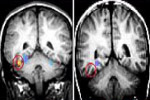
Brains "light up" in response to eye contact
In most babies, researchers could see their brains "light up" in response to eye contact, as if a person's direct gaze piqued their interest far more than the image of someone looking away.
The brains of babies later diagnosed with autism, however, didn't react any differently to images of eyes moving toward the viewer than they did to those of people whose eyes were looking away, Johnson says.
Significantly, those changes were also noticeable from around 6 months.
Paterson and others are eager to begin scanning babies even earlier, such as by age 3 months, to see when the first signs of autism emerge.
These early tests aren't yet ready to be used to screen babies, Paterson says.
But if the scans could be refined and proven accurate, doctors might be able to use them on the younger siblings of autistic children.
That could allow doctors the chance to get high-risk babies into therapy very early, before symptoms even appear, and when they might even be prevented.
"We hope that we will be able to change the course of brain development", Dawson says...
 Search for more... Search for more...
|
|

Mozgovi se "pale" kao odgovor na uspostavljanje kontakta očima
Kod većine su djece znanstvenici mogli uočiti da se njihovi mozgovi "pale" kao odgovor na uspostavljanje kontakta očima, kao da izravan pogled osobe kod njih izaziva mnogo veći interes od osobe koja ih ne gleda.
Mozgovi beba kojima je kasnije dijagnosticiran autizam, međutim, nisu imali različite reakcije na pogled određenih osoba u njihovom smjeru od pogleda tih osoba na stranu, kaže Johnson.
Znakovito je da su te promjene također bile primjetne već od približno 6 mjeseci starosti.
Paterson i drugi žele početi skeniranje beba čak i ranije, u starosti od oko 3 mjeseca, kako bi vidjeli kada se javljaju prvi znakovi autizma.
Ovi rani testovi nisu još spremni za korištenje kod promatranja beba, kaže Paterson.
Ali ako se skeniranja mogu usavršiti i ako se dokaže da su točna, liječnici bi ih mogli koristiti na mlađoj braći i sestrama autistične djece.
To bi liječnicima moglo dati priliku da vrlo rano počnu liječiti visokorizične bebe, čak i prije nego što se simptomi pojave, a kada ih je možda čak moguće i spriječiti.
"Nadamo se da ćemo moći promijeniti tijek razvoja mozga", kaže Dawson...
 Potraži više... Potraži više...
|
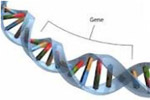
Autism risk gene linked to differences in brain structure
Healthy individuals who carry a gene variation linked to an increased risk of autism have structural differences in their brains that may help explain how the gene affects brain function and increases vulnerability for autism.
The results of this innovative brain study are described in an article in the groundbreaking neuroscience journal "Brain Connectivity"...
 Search for more... Search for more...
|
|

Gen koji nosi rizik od autizma povezan je s razlikama u strukturi mozga
Zdrave osobe koje nose varijaciju gena povezanu s povećanim rizikom od autizma imaju strukturne razlike u svojim mozgovima što bi moglo pomoći da objasnimo kako gen utječe na funkcije mozga i povećava ranjivost na autizam.
Rezultati ove inovativne studije mozga opisane su u članku u revolucionarnom časopisu za neuroznanost po imenu "Brain Connectivity" (povezivost mozga)...
 Potraži više... Potraži više...
|
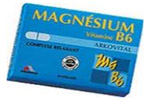
Can vitamin B6 and magnesium help?
One of the most popular alternative therapies for autism is vitamin supplementation of B6 and magnesium.
Vitamin B6 is necessary for scores of biological functions, one of which is when an enzyme converts B6 into a compound called pyroxidal-5-phosphate (PLP) which produces brain chemicals such as dopamine which affects mood and behaviour.
Some research suggests that this conversion process is impaired in autistic children and they are therefore lacking the necessary levels of dopamine.
Magnesium is an essential mineral for the health of every cell in the body, including brain cells.
In addition, magnesium is needed in order for B6 to work properly.
Autistic children have been found to have low levels of magnesium in their hair and blood...
 Search for more... Search for more...
|
|

Mogu li vitamin B6 i magnezij pomoći?
Jedna od najpopularnijih alternativnih terapija za autizam je korištenje dodatka vitamina B6 i magnezija.
Vitamin B6 je nužan za brojne biološke funkcije, među kojima i funkciju u kojoj enzim pretvara vitamin B6 u spoj pod nazivom piroksidal-5-fosfat (PLP) koji proizvodi kemijske spojeve u mozgu, poput dopamina koji utječe na raspoloženje i ponašanje.
Neka istraživanja pokazuju da je ovaj proces pretvorbe oslabljen kod autistične djece, kojima stoga nedostaju potrebne razine dopamina.
Magnezij je temeljni mineral za zdravlje svake stanice u tijelu, uključujući i moždane stanice.
Osim toga, magnezij je potreban da bi vitamin B6 ispravno funkcionirao.
Otkriveno je da autistična djeca imaju niske razine magnezija u kosi i krvi...
 Potraži više... Potraži više...
|
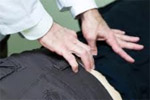
Adjusting the spine of the patient
Chiropractic treatments are often used to treat a variety of conditions.
Many consider them as suitable only for a bad back, or a sore arm.
But as a number of those who have autism are discovering, chiropractic care can help to treat the symptoms.
In some cases, regular treatments may also prevent autism from occurring, which is particularly important for parents to consider.
The chiropractor may employ one of several types of treatments in order to 'adjust' the spine of the patient.
The first, and most popular, is a hands on approach, meaning that they will manually manipulate the spine or other areas of the body, such as the wrists or knees...
 Search for more... Search for more...
|
|

Podešavanje kralješnice pacijenta
Kiropraktičke se terapije često koristi za liječenje različitih stanja.
Mnogi ih smatraju odgovarajućima samo za bolove u leđima ili u ruci.
Međutim, kako su brojne osobe s autizmom počele otkrivati, kiropraktika može pomoći u liječenju simptoma.
U nekim slučajevima redovite terapije mogu i spriječiti autizam, što je od osobite važnosti roditeljima, koji bi ovo trebali razmotriti.
Kiropraktičar može upotrijebiti jedan od nekoliko tipova terapija kako bi 'podesio' kralježnicu pacijenta.
Prva i najpopularnija terapija je ručni pristup, što znači da će ručno manipulirati kralježnicom ili drugim dijelovima tijela, poput zglobova i koljena...
 Potraži više... Potraži više...
|

Exercise is vital
While exercise is obviously an important aspect of anyone's physical well-being, it has been shown that exercise is particularly vital for individuals with autism.
While obesity is a cause for concern for the average population, individuals suffering from autism are at a markedly higher risk of becoming overweight due to lack of physical activity.
While the health benefits are obvious, decades of studies have shown that an exercise regimen offers significant reduction in aggression and difficulties with attention span...
 Search for more... Search for more...
|
|

Vježbanje je ključno
Premda je vježbanje očito važan aspekt za svačiju fizičku dobrobit, pokazalo se da je osobito važno za osobe s autizmom.
Dok je pretilost uzrok zabrinutosti za prosječno stanovništvo, osobe koje pate od autizma imaju znatno veći rizik od pretilosti zbog nedostatka tjelesne aktivnosti.
Iako su zdravstvene prednosti očite, desetljeća istraživanja pokazala su da režim vježbanja omogućava značajno smanjenje agresije i poremećaja pažnje...
 Potraži više... Potraži više...
|
|
|




